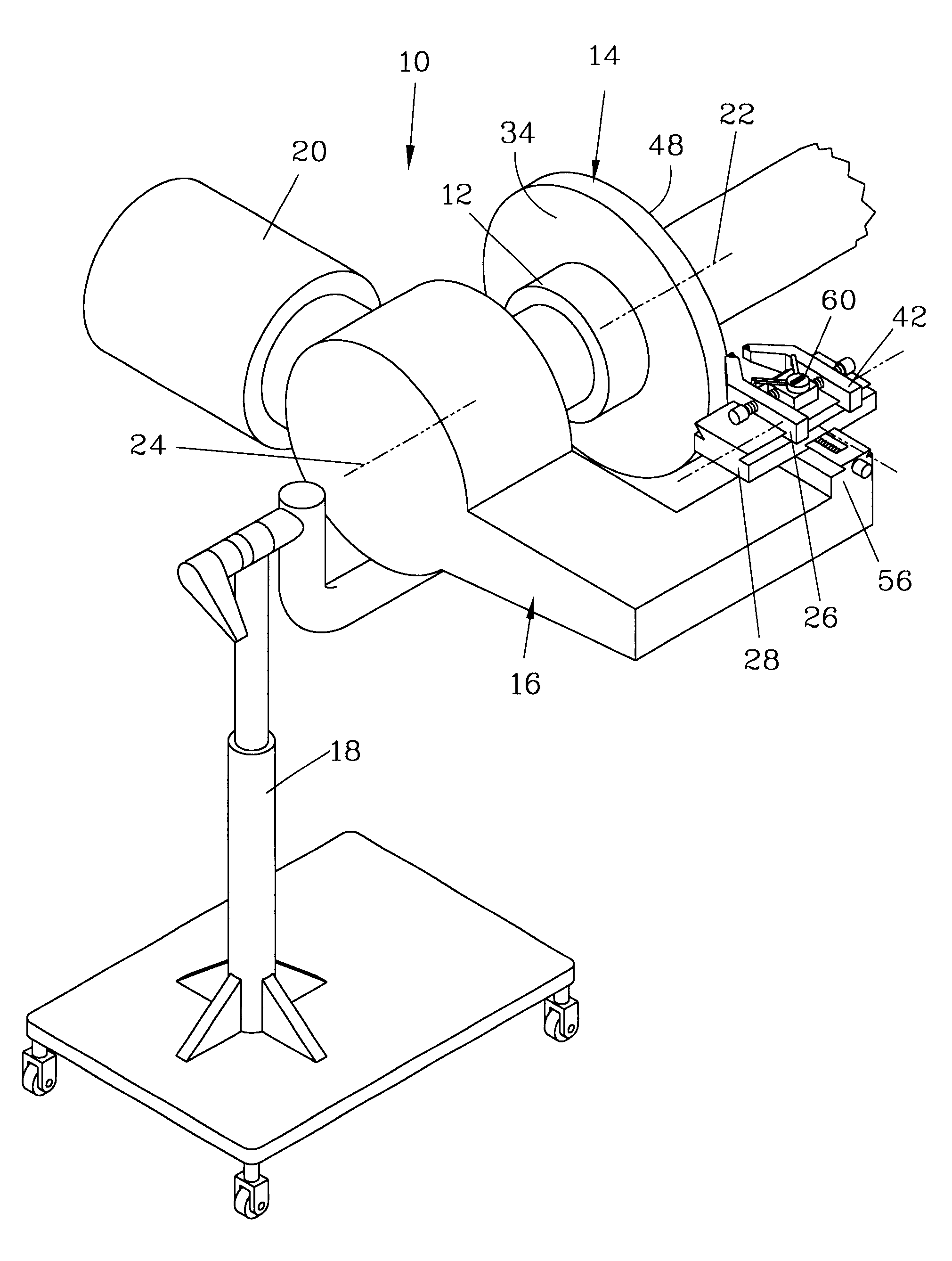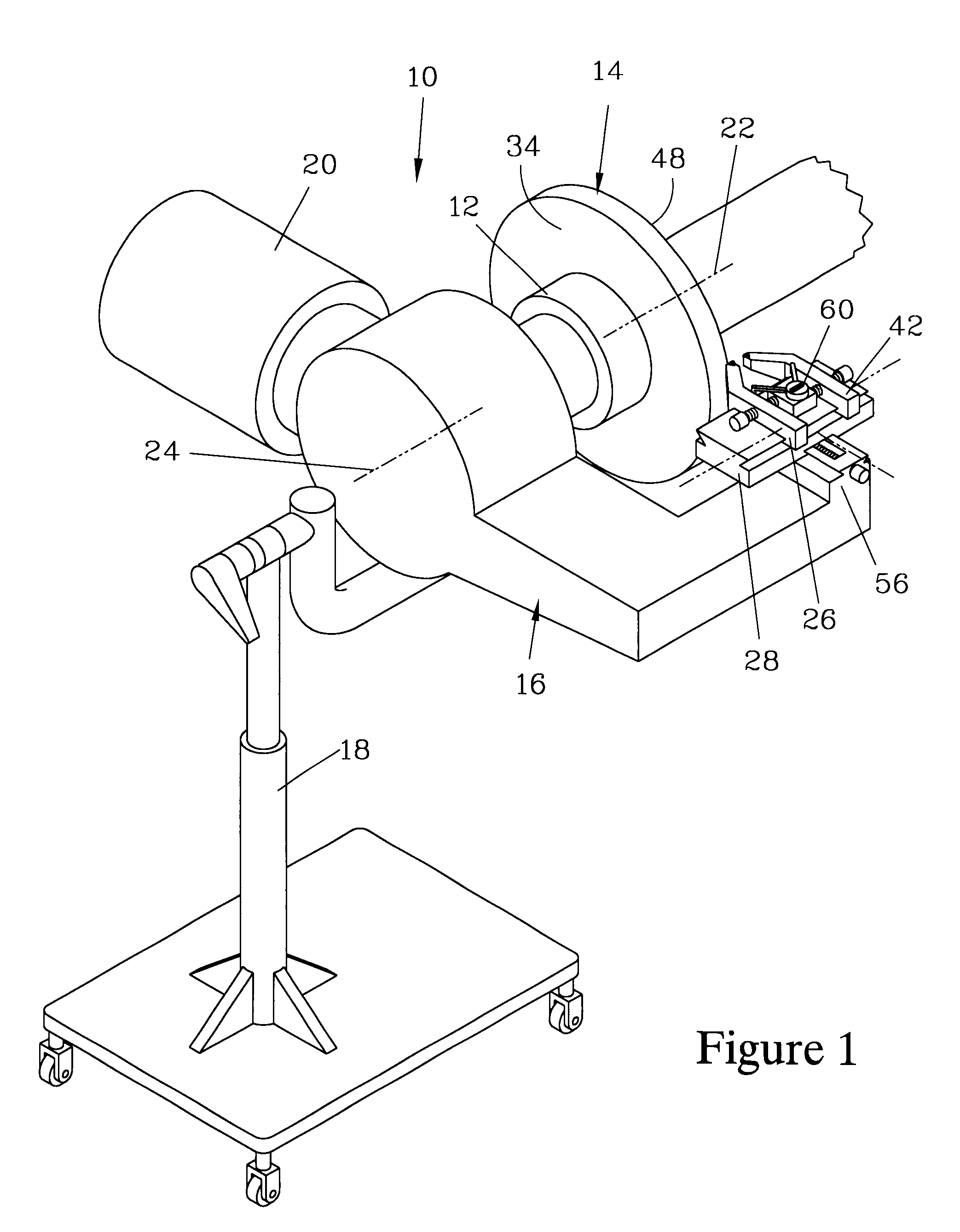On-vehicle disk brake lathe
a technology of brake lathe and disk, which is applied in the direction of turning machine accessories, portability lathes, manufacturing tools, etc., can solve the problem of not teaching the use of such a mechanism on the on-vehicle lathe, and achieve the effect of facilitating the measurement of disk thickness and lateral run-ou
- Summary
- Abstract
- Description
- Claims
- Application Information
AI Technical Summary
Benefits of technology
Problems solved by technology
Method used
Image
Examples
Embodiment Construction
FIG. 1 is an isometric view of one embodiment of the improved on-vehicle disk brake lathe 10 of the present invention, hereinafter referred to as disk brake lathe 10. The disk brake lathe 10 attaches to a wheel hub 12 which in turn has a brake disk 14 fixably attached with respect thereto. The disk brake lathe 10 has a frame 16 which is mounted with respect to a vehicle (not shown) on which the wheel hub 12 is rotatably mounted. The frame 16 is supported by the attachment of the disk brake lathe 10 to the wheel hub 12. To prevent rotation of the disk brake lathe 10, the lathe frame 16 can be additionally supported by attachment to the vehicle or can be mounted with respect thereto via a floor stand 18. A motor 20 attached to the frame 16 rotates the wheel hub 12 and the brake disk 14 about a hub axis 22.
The disk brake lathe 10 has a lathe axis 24 which is aligned with the hub axis 22 when the disk brake lathe 10 is operated. Means to align the hub axis 22 with the lathe axis 24 are ...
PUM
| Property | Measurement | Unit |
|---|---|---|
| movement | aaaaa | aaaaa |
| outer diameter | aaaaa | aaaaa |
| depth of cut | aaaaa | aaaaa |
Abstract
Description
Claims
Application Information
 Login to View More
Login to View More - R&D
- Intellectual Property
- Life Sciences
- Materials
- Tech Scout
- Unparalleled Data Quality
- Higher Quality Content
- 60% Fewer Hallucinations
Browse by: Latest US Patents, China's latest patents, Technical Efficacy Thesaurus, Application Domain, Technology Topic, Popular Technical Reports.
© 2025 PatSnap. All rights reserved.Legal|Privacy policy|Modern Slavery Act Transparency Statement|Sitemap|About US| Contact US: help@patsnap.com



